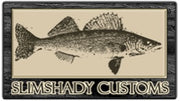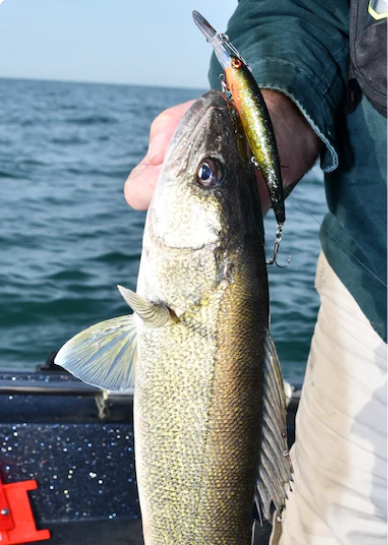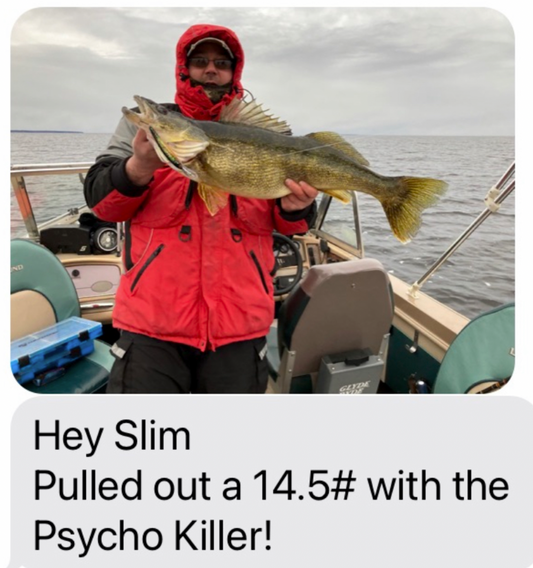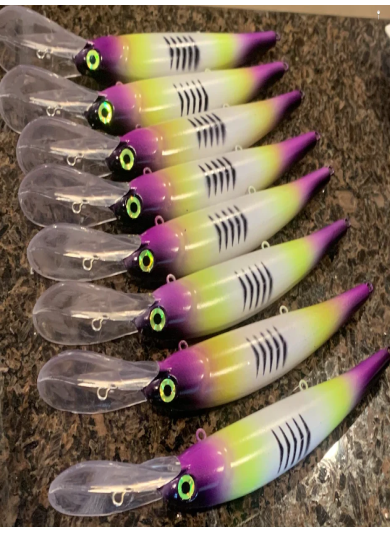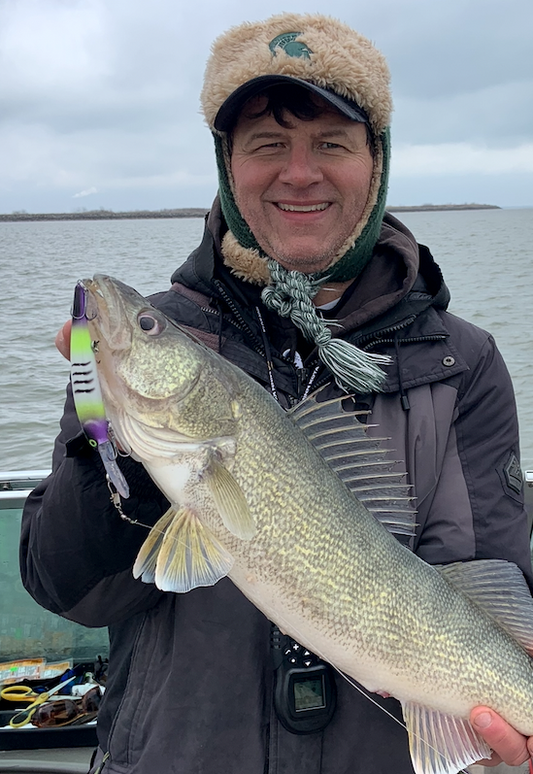Article: Fishing Tips- Setting your boat up for trolling big water
If you are new to the trolling game or thinking about getting into it, there are a number of things that you need (or should have) before you get started. I understand that it may take some time (and lots of money) to accumulate everything on this list, so you don't necessarily need everything before you start trolling big water (but it certainly helps).
Obviously, for starters, you need a boat that is large enough and seaworthy enough to handle the water you will be fishing. What qualifies as "big enough" varies depending on the day, the body of water, the wind direction, the season, etc. Some people are more risk averse than others, so I am going to give you my opinion and what I would be comfortable with.
For me personally, I would not venture out onto the Great Lakes in anything less than a wide, stable 16 footer. 17 or 18 is better, and anything larger is preferred. I have a 20 foot Lund Fisherman, with a 100 inch beam, a 200 HP Yamaha and a 9.9 kicker.

Besides the boat, you need all of the standard safety gear:
- Life-jackets for everyone (self-inflating ones that you wear all the time are ideal, especially during the cold water months)
- Flares
- Compass (even if you have GPS)
- Ship to shore radio
- Bilge pumps (plural) - you should always have a back-up on big water.
- Extra plug
- Kicker motor - I would never feel comfortable fishing on Erie or any large body of water without a kicker. There have been several times when I have needed it to get back home (over the course of my various boats) and I was happy to have it. It is obviously great to have for trolling as well.
- Extra clothes
- Tow rope
- Jumper cables
- Wire cutters (in case you get a hook in your hand, etc)
- First-aid kit
- Horn
- Anchor(s) with plenty of rope
- Plenty of gas (never "push it", go with way more than you think you might need)
Now for the fishing related gear:
- Rod holders - If you can get 6 or more, do so. You don't need to go super expensive though. I have the Cabelas brand (aka Scotty's) and they work great. I think they are about $25 each and they come with the base. I have pulled magnum dipseys with those things @ 3.5 mph, so don't let anyone tell you they aren't durable enough. Your rod would break long before they will. If you are going to be doing lots of trolling with multiple boards, then rod-trees are preferred. I just put some on my boat this past fall and I am sorry that I didn't do it long ago. They are awesome for pulling boards. There are multiple advantages to rod-trees (IMO), but here are the main ones:
- They keep your rods lined up vertically, which makes it much easier to keep the boards lined up and from tangling with each other.
- I would also highly recommend having matching rods for all of your trolling rods, as that allows you to see if one of them is bending further than the rest. If you are running the same baits and the same boards, then a rod that is bent over further indicates that you either have a small fish on, or you picked up a weed or some debris, etc. Without this, it is easy to pull an unproductive bait around for a long time and not know it.
- Rod trees make it easy to grab any rod from a single location in the boat. This is especially nice when it is a bit rough.
- Because they situate the rods vertically, the rods for the outside boards are up higher, keeping the line out of the water, which reduces the drag on the board. If the outside boards are far from the boat and the rods are lower, the extra drag can cause them to dip back further making them harder to keep aligned and to detect a small fish.
- Trolling motor - I would say this is more of a "nice to have", but boy are they nice to have. I use my electric to troll downwind when we can get away with speeds under 1.5 mph. When I have to go faster, I will start the kicker. I still use the electric for minor speed changes and for steering/auto-pilot. The Minn-kota line-up Terrova/Ulterra/Ultrex are all really nice.
- Planer boards- If you are going to be trolling anywhere on big water, then planer boards are a must. Ideally, you would have as many boards as you have rod-holders, but get at least 2-4 to start with. I wrote an article about big boards vs in-line planers that may be helpful. Here's a link to it: https://slimshadycustoms.com/blogs/n...-planer-boards
- Electronics- One of the most important pieces of equipment for most trollers is our graph/sonar unit. If you are going to be fishing big-water, then you will need one with GPS mapping too. Without good electronics you are fishing blind. Sure you can catch fish without them, but it would be so much harder.
- Drift socks - If you don't have a kicker or an electric trolling motor, then drift socks are critical. I have both and I still have 2 drift socks with me at all times. If you are fishing on a rough and windy day, drift socks help reduce the wave-surge that makes it very difficult to have a solid presentation to the fish. Some wave-surge can induce bites, but too much can make your presentation very un-natural. This is less of an issue with cranks and spoons than it is with harnesses, mainly because you have less line out and your in-line sinker (or BB) is going up and down too much. Putting a drift sock out on each side will usually reduce the wave surge by 50% or more.
If you have never trolled on Erie or any of the Great Lakes, I would highly recommend booking a trip with a Charter Captain to learn the ropes. You can figure it out on your own eventually. However, how many trips will you waste doing so? When you consider how much money you spend on tackle, licenses, gas, etc, I think it is a wise investment. Once you have the confidence that you get from seeing it done, you will bring that with you on your next trip on your own boat. Just my 2 cents.
See you on the water!
